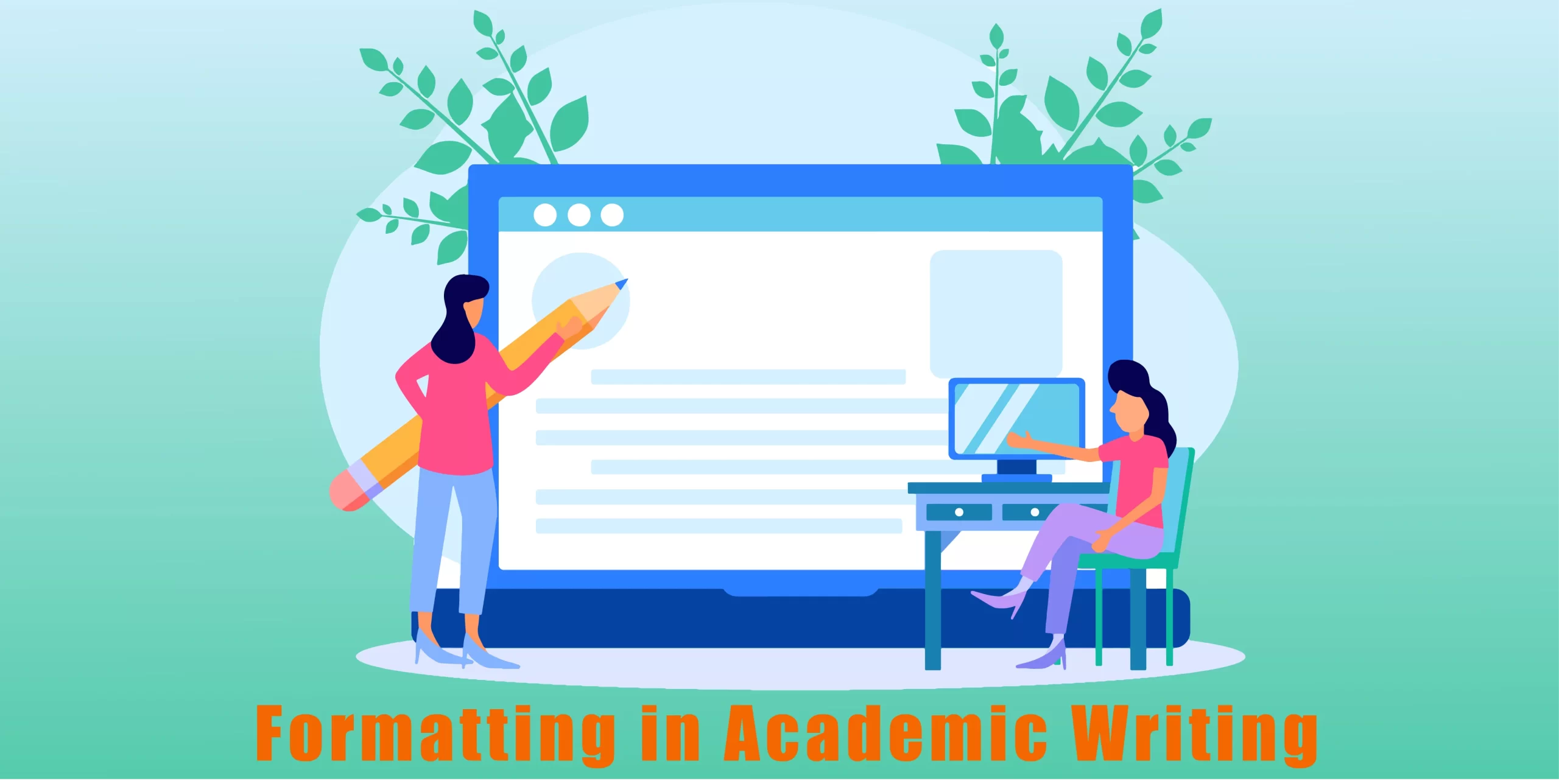Introduction
Academic writing is the cornerstone of scholarly communication. It encompasses a unique style that emphasizes clarity, precision, and adherence to established norms. These norms are crucial as they ensure the credibility, readability, and accessibility of scholarly works. Among these norms, strict formatting stands out as a vital element that academic writers must adhere to. This article explores the reasons behind the necessity of strict formatting in academic writing, providing a comprehensive guide that highlights its benefits, key elements, and common pitfalls to avoid.
The Purpose of Strict Formatting
1. Ensuring Consistency
Consistency is fundamental in academic style writing. Different academic disciplines follow specific formatting guidelines, such as APA, MLA, and Chicago styles, which provide a uniform structure that helps readers quickly understand and navigate the text. By adhering to these guidelines, academic writers ensure that their work meets the expected standards, making it easier for peers, reviewers, and instructors to follow and evaluate their arguments.
For example, an APA-formatted paper includes a title page with specific information such as the title, author’s name, and institution. The running head is also required in the header, providing a consistent layout throughout the document.
2. Enhancing Readability
Proper formatting significantly enhances the readability of academic papers. Structured documents with clear headers, subheaders, and organized paragraphs are easier to read and comprehend. Formatting elements like academic headers and subheaders help break down the text into manageable sections, guiding readers through the content logically. This structured approach not only aids in understanding but also helps in retaining information. Moreover, a well-formatted paper reflects the writer’s attention to detail and commitment to presenting their work professionally.
Readable papers are more likely to engage readers, facilitating better comprehension and retention of information. For instance, using double-spacing and a readable font like Times New Roman in 12-point size can make the text easier to read.
3. Facilitating Peer Review and Grading
Strict formatting simplifies the peer review and grading processes. Academic experts and instructors are accustomed to specific formats, and adherence to these standards ensures that papers can be quickly and efficiently reviewed. Proper formatting allows reviewers to focus on the content, methodology, and conclusions rather than being distracted by inconsistent presentation. Additionally, standardized formatting helps in identifying key sections such as the abstract, literature review, methodology, and conclusion, making the evaluation process more straightforward.
The peer review process is essential for maintaining the quality and credibility of academic work. Proper formatting ensures that the review process is efficient, allowing reviewers to concentrate on the substance of the paper rather than its presentation.
Key Elements of Academic Formatting
Academic Headers and Titles
Academic headers and titles play a critical role in organizing and presenting academic papers. They provide a clear hierarchy of information, helping readers navigate through the document. Standard practices for headers and titles vary depending on the chosen formatting style. For instance, APA style uses a specific format for section headings that includes different levels of headers. Proper use of headers not only improves readability but also ensures that the paper meets academic standards.
For example, in APA style, headers are formatted as follows:
- Level 1 Header: Centered, Bold, Title Case
- Level 2 Header: Left-Aligned, Bold, Title Case
- Level 3 Header: Left-Aligned, Bold Italic, Title Case
Headers and titles also serve to highlight the main points and structure of the paper, making it easier for readers to follow the argument and understand the key ideas.
Paragraph Structure
The structure of paragraphs is another crucial element in academic writing. Well-organized paragraphs with clear topic sentences and logical transitions enhance the flow of the paper. Each paragraph should ideally be of a moderate length, neither too long nor too short, to maintain reader engagement. Effective transition between paragraphs helps in maintaining the continuity of ideas, ensuring that the paper reads smoothly.
A well-structured paragraph typically includes a topic sentence that introduces the main idea, supporting sentences that develop the idea, and a concluding sentence that reinforces the main point and provides a transition to the next paragraph.
For example, a properly structured paragraph in an APA-formatted paper might look like this:
- Topic Sentence: “One of the primary reasons for strict formatting is to ensure consistency across academic documents.”
- Supporting Sentences: “Consistency allows readers to focus on the content rather than being distracted by varying formats. Different academic disciplines follow specific formatting guidelines, such as APA, MLA, and Chicago styles.”
- Concluding Sentence: “By adhering to these guidelines, academic writers ensure that their work meets the expected standards, making it easier for peers, reviewers, and instructors to follow and evaluate their arguments.”
Citations and References
Citations and references are fundamental to academic writing as they give credit to original sources and allow readers to verify the information presented. Different citation styles such as APA, MLA, and Chicago have specific guidelines for citing sources. Proper referencing not only demonstrates academic integrity but also helps in avoiding plagiarism. Adherence to citation rules is a mark of thoroughness and respect for the academic community’s norms.
For example, in APA style, an in-text citation for a book might look like this:
(Smith, 2020, p. 45)
And the corresponding reference list entry would be:
Smith, J. (2020). Title of the Book. Publisher.
Citations and references provide a framework for academic work, allowing readers to trace the sources of information and verify the accuracy and credibility of the arguments presented.
Types of Academic Papers and Their Formatting Requirements
Research Papers
Research papers are a common type of academic paper that requires meticulous formatting. These papers typically include sections such as the abstract, introduction, literature review, methodology, results, discussion, and conclusion. Each section has specific formatting requirements that must be followed. For example, in APA style, the abstract should be a concise summary of the research, limited to a certain number of words, and formatted as a single paragraph.
Research papers are designed to present original research findings and contribute to the body of knowledge in a particular field. Proper formatting ensures that the research is presented clearly and professionally, facilitating peer review and dissemination.
Essays
Essays, another form of academic writing, also have distinct formatting requirements. Unlike research papers, structured essays may have more flexibility but still need to adhere to academic standards. The introduction, body paragraphs, and conclusion should be clearly defined, and citations must be properly formatted. Essays often require a more personal and argumentative style, but they must still maintain the formal tone of academic writing.
Essays are typically used to present and develop an argument or viewpoint. Proper formatting ensures that the essay is organized logically and presented clearly, enhancing its persuasive power.
Thesis and Dissertations
Theses and dissertations are extensive academic papers that demand rigorous formatting. These documents often include numerous sections and sub-sections, each with specific formatting guidelines. Detailed formatting requirements cover everything from the title page to the appendices. Proper formatting in theses and dissertations is crucial as it reflects the culmination of years of academic work and research.
Theses and dissertations represent the pinnacle of academic achievement, demonstrating the writer’s ability to conduct independent research and contribute to their field. Proper formatting ensures that these important documents are presented professionally and meet the highest standards of academic rigor.
Different Formatting and Referencing Styles
APA (American Psychological Association) Style
- Title Page: Includes the title of the paper, author’s name, and institutional affiliation. A running head and page number are also included.
- Font and Size: Times New Roman, 12-point.
- Spacing: Double-spaced throughout the paper.
- Citations: In-text citations include the author’s last name and year of publication (e.g., Smith, 2020).
- References: Listed at the end of the paper in alphabetical order by the author’s last name. Each reference should be formatted with a hanging indent.
- Example: Smith, J. (2020). Title of the Book. Publisher.
MLA (Modern Language Association) Style
- Title Page: Typically not required. Instead, the student’s name, instructor’s name, course, and date are listed on the first page above the title.
- Font and Size: Times New Roman, 12-point.
- Spacing: Double-spaced throughout the paper.
- Citations: In-text citations include the author’s last name and page number (e.g., Smith 45).
- Works Cited: Listed at the end of the paper in alphabetical order by the author’s last name. Each entry should be formatted with a hanging indent.
- Example: Smith, John. Title of the Book. Publisher, 2020.
Chicago Style
- Title Page: Includes the title of the paper, author’s name, and date.
- Font and Size: Times New Roman, 12-point.
- Spacing: Double-spaced throughout the paper.
- Citations: Two systems are used—Notes and Bibliography (footnotes or endnotes) and Author-Date.
- Example (Notes and Bibliography): 1. John Smith, Title of the Book (Publisher, 2020), 45.
- Bibliography: Listed at the end of the paper in alphabetical order by the author’s last name. Each entry should be formatted with a hanging indent.
- Example: Smith, John. Title of the Book. Publisher, 2020.
Harvard Style
- Title Page: Includes the title of the paper, author’s name, and institutional affiliation.
- Font and Size: Times New Roman, 12-point.
- Spacing: Double-spaced throughout the paper.
- Citations: In-text citations include the author’s last name and year of publication (e.g., Smith, 2020).
- Reference List: Listed at the end of the paper in alphabetical order by the author’s last name. Each entry should be formatted with a hanging indent.
- Example: Smith, J. (2020) Title of the Book. Publisher.
Common Formatting Mistakes and How to Avoid Them
Inconsistent Citations
One of the most common formatting mistakes in academic papers is inconsistent citations. Using different citation styles within the same paper or failing to follow the guidelines of a chosen style can confuse readers and diminish the paper’s credibility. To avoid this, writers should choose a citation style at the beginning and adhere to it consistently throughout the paper.
Consistency in citations is essential for maintaining the credibility and professionalism of an academic paper. Writers should familiarize themselves with the specific guidelines of citation style and apply them consistently.
For example, an APA-style citation might look like this:
- In-text: (Smith, 2020, p. 45)
- Reference list: Smith, J. (2020). Title of the Book. Publisher.
Improper Use of Headers
Improper use of academic headers is another frequent mistake. Headers should follow a hierarchical structure, with primary headers (H1) indicating main sections and secondary headers (H2, H3) indicating subsections. Correct application of these hierarchical tags not only improves readability but also helps in organizing the content logically. Writers should familiarize themselves with the header guidelines of their chosen formatting style to ensure proper use.
Proper use of headers ensures that the paper is organized logically and presented clearly, making it easier for readers to navigate and understand the content.
For example, in MLA style, headers are usually formatted as follows:
- Level 1 Header: Centered, Bold, Title Case
- Level 2 Header: Left-Aligned, Italicized, Title Case
Ignoring Formatting Guidelines
Ignoring or overlooking formatting guidelines can significantly impact the quality of an academic paper. Common issues include incorrect margins, font sizes, and line spacing. To avoid these mistakes, writers should carefully review the formatting guidelines before starting their paper and double-check their work against these standards before submission.
Attention to detail is essential in academic writing. Writers should ensure that their paper adheres to all formatting guidelines, reflecting their commitment to academic standards and professionalism.
For example, in Harvard style, the title page should include specific details formatted correctly:
- Title: Centered and Bold
- Author’s Name: Centered, below the title
- Institutional Affiliation: Centered, below the author’s name
Benefits of Proper Formatting
Professionalism and Credibility
Proper formatting enhances the professionalism and credibility of an academic paper. A well-formatted document demonstrates the writer’s attention to detail and commitment to academic standards. It reflects a thorough understanding of academic conventions and helps in establishing the writer’s credibility within the academic community. Proper formatting also ensures that the paper is taken seriously by peers, reviewers, and instructors.
A professional and credible paper is more likely to be accepted by academic journals, conferences, and other scholarly venues, increasing its impact and visibility.
Ease of Access and Distribution
Well-formatted academic papers are easier to access and distribute. They are more likely to be accepted by academic journals and conferences, increasing their reach and impact. Proper formatting ensures that the paper can be easily shared and accessed by a wider audience, facilitating academic collaboration and dissemination of knowledge.
Proper formatting also enhances the paper’s discoverability and accessibility, making it easier for readers to find, read, and cite the work.
Tips for Proper Academic Formatting
- Use of Templates: Using templates can help to ensure that the paper adheres to the required formatting guidelines. Many word processors offer templates for common citation styles.
- Review Guidelines: Reviewing the formatting guidelines for the specific citation style being used is essential for ensuring compliance. This includes guidelines for font size, margins, headings, and citations.
- Proofreading: Proofreading the paper for formatting errors is crucial for maintaining professionalism. This includes checking for consistent use of style, accurate citations, and proper structure.
Tools for Academic Formatting
- Citation Managers: Citation managers, such as EndNote and Zotero, can help to manage and format citations and references. These tools can save time and ensure that citations are accurately and consistently formatted.
- Writing Software: Writing software, such as Microsoft Word and Google Docs, offer tools and templates for formatting academic papers. These tools can help to ensure that the paper adheres to the required guidelines.
- Formatting Tools: Formatting tools, such as Grammarly and Hemingway, can help to check for grammar and style issues. These tools can provide suggestions for improving the clarity and readability of the paper.
Academic Writing Services
Academic writing services offer professional assistance with writing and formatting academic papers. These services can help with research, writing, editing, and proofreading.
- Benefits: The benefits of using academic writing services include access to experienced writers, time-saving, and improved writing quality. These services can help to ensure that academic papers meet high standards of quality and are completed on time.
- How to Choose: When choosing academic writing services, it is important to consider factors such as the reputation of the service, the qualifications of the writers, and the range of services offered. Reading reviews and seeking recommendations can help to make an informed decision.
Professional Help with Academic Formatting
Professional services offer expert assistance with formatting academic papers. These services can help to ensure that the paper adheres to the required guidelines and standards.
- Advantages: The advantages of using professional formatting services include access to experienced professionals, time-saving, and improved quality. These services can help to ensure that the paper is well-formatted and meets high standards of quality.
- Finding the Best Help: Finding the best professional help involves researching and comparing different services. Reading reviews and seeking recommendations can help to identify the best formatting services.
Conclusion
In conclusion, strict formatting is a fundamental aspect of academic writing that ensures consistency, enhances readability, and facilitates peer review and grading. Key elements of academic formatting include the proper use of academic headers, paragraph structure, and citations. Different types of academic papers, such as research papers, essays, and theses, have specific formatting requirements that must be adhered to. By avoiding common formatting mistakes and following established guidelines, academic writers can enhance the professionalism and credibility of their work, ensuring that their papers are taken seriously within the academic community.










